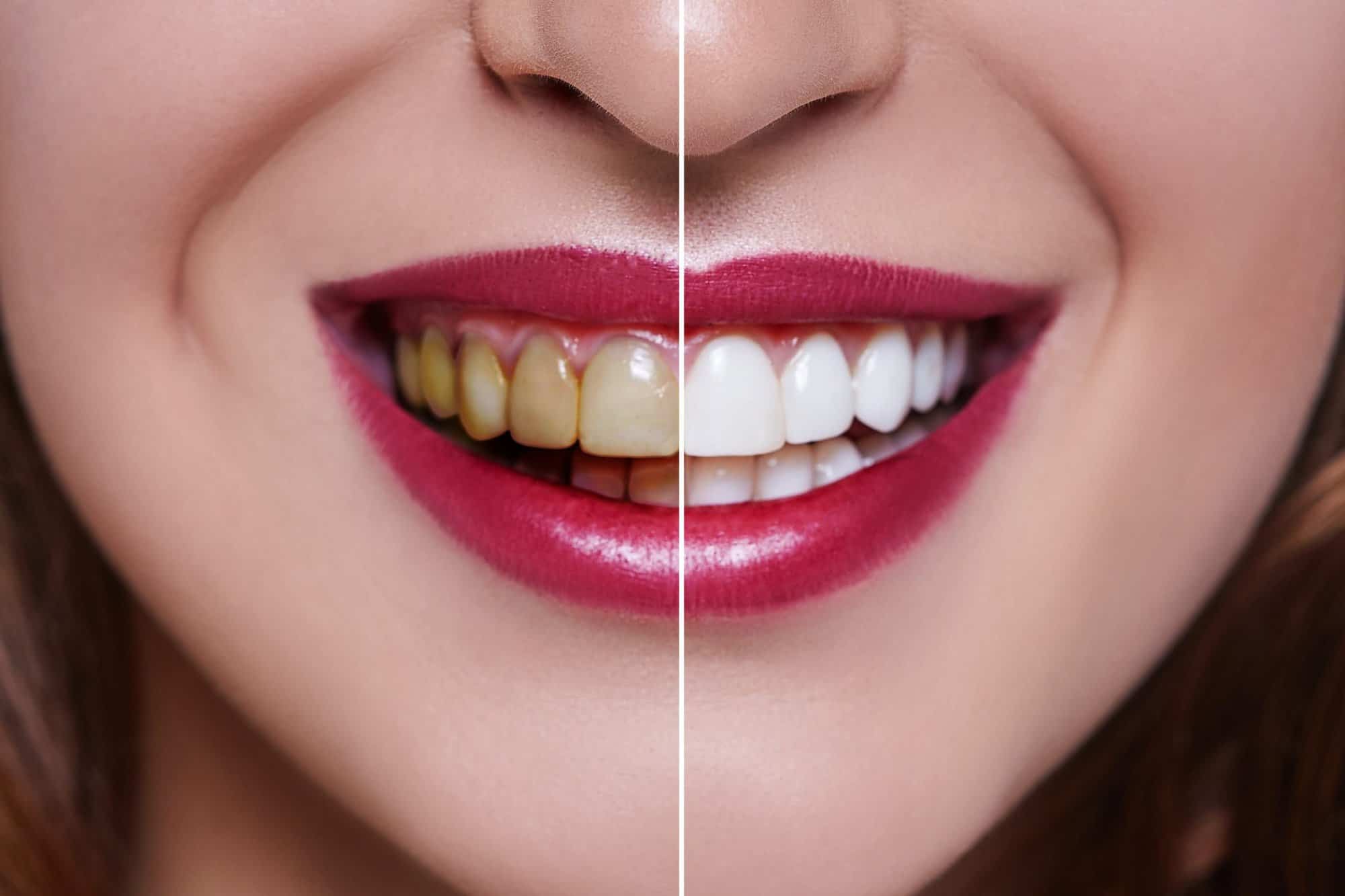Your cart is currently empty!
A bright, white smile is often associated with health, youth, and confidence. Teeth whitening has become one of the most popular cosmetic dental procedures worldwide. But have you ever wondered how exactly teeth whitening works? Let’s delve into the science behind the processes that help transform stained teeth into pearly whites.
Understanding Tooth Discoloration
Before exploring how whitening works, it’s essential to understand why teeth become discolored in the first place. Tooth discoloration can be classified into two main types:
- Extrinsic Stains: These are surface stains caused by external factors like food, drinks (coffee, tea, red wine), tobacco use, and poor dental hygiene.
- Intrinsic Stains: These are deeper stains within the tooth’s structure, often resulting from aging, trauma, excessive fluoride exposure during tooth development, or the use of certain medications like tetracycline antibiotics.
The Anatomy of a Tooth
A tooth consists of several layers:
- Enamel: The hard, outer surface that protects the tooth.
- Dentin: The layer beneath the enamel, which is yellowish and less dense.
- Pulp: The innermost part containing nerves and blood vessels.
Stains can affect both the enamel and the dentin layers. Effective whitening aims to address discoloration in these areas.
How Teeth Whitening Works
Teeth whitening primarily involves the use of bleaching agents to break down stains. The most common active ingredients are hydrogen peroxide and carbamide peroxide.
1. Hydrogen Peroxide and Carbamide Peroxide
- Hydrogen Peroxide (H₂O₂): A powerful bleaching agent that penetrates the enamel to reach discolored molecules.
- Carbamide Peroxide: It breaks down into hydrogen peroxide and urea upon contact with water. Urea further decomposes to release ammonia and carbon dioxide, aiding in the whitening process.
2. The Chemical Reaction
When applied to the teeth, hydrogen peroxide molecules penetrate the enamel and dentin layers. Here’s what happens:
- Oxidation: The peroxide molecules interact with pigmented compounds (chromogens) within the tooth structure.
- Breaking Bonds: The oxidation process breaks the double bonds of chromogens, converting them into smaller, less pigmented molecules.
- Light Reflection: Smaller molecules absorb less light, making teeth appear whiter as more light is reflected.
3. Types of Whitening Treatments
a. In-Office Professional Whitening
- High Concentration Peroxides: Dentists use whitening agents with higher peroxide concentrations (up to 40%).
- Activation Methods: Sometimes, light or laser is used to accelerate the chemical reaction, although studies vary on its effectiveness.
- Protective Measures: Gums and soft tissues are shielded to prevent irritation.
Advantages:
- Immediate results.
- Supervised by a professional, ensuring safety.
b. At-Home Whitening Kits
- Custom Trays: Dentists provide trays molded to your teeth, along with a peroxide gel (usually 10-22% carbamide peroxide).
- Usage: Worn for a specified period daily over one to two weeks.
Advantages:
- Convenience of home use.
- Gradual whitening allows for monitoring of tooth sensitivity.
c. Over-the-Counter Products
- Whitening Strips, Gels, Toothpastes: Contain lower concentrations of peroxide.
- Ease of Access: Available without a prescription.
Advantages:
- Affordable and easy to use.
- Suitable for mild staining.
4. Non-Bleaching Whitening Agents
Some products use physical or chemical actions to remove surface stains without bleaching:
- Abrasives: Toothpastes with mild abrasives scrub away surface stains.
- Enzymes and Detergents: Help break down stains through chemical action.
Factors Affecting Whitening Efficacy
- Type of Stain: Intrinsic stains are harder to remove than extrinsic stains.
- Concentration of Peroxide: Higher concentrations yield faster results but may increase sensitivity.
- Duration of Exposure: Longer contact time enhances whitening but requires caution to prevent irritation.
- Tooth Anatomy: Thickness of enamel and dentin can influence results.
Safety and Side Effects
Tooth Sensitivity
- Cause: Peroxide can irritate the tooth nerve by penetrating the enamel and dentin.
- Management: Use desensitizing toothpaste; reduce frequency of whitening treatments.
Gum Irritation
- Cause: Contact of peroxide with soft tissues.
- Prevention: Proper application and use of protective barriers during professional treatments.
Enamel Damage
- Myth Debunked: When used correctly, peroxide does not damage the enamel structure.
- Evidence: Studies show that bleaching agents do not significantly alter enamel microhardness or morphology.
Post-Whitening Care
- Avoid Stain-Causing Substances: Limit intake of coffee, tea, red wine, and tobacco.
- Maintain Oral Hygiene: Regular brushing and flossing help preserve whitening results.
- Use a Straw: When consuming staining beverages to minimize contact with teeth.
When Whitening Might Not Work
- Restorations: Fillings, crowns, and veneers do not whiten with bleaching agents.
- Severe Discoloration: Deep intrinsic stains may require alternative treatments like veneers or bonding.
- Underlying Dental Issues: Cavities or gum disease should be addressed before whitening.
Teeth whitening is a scientifically backed method to enhance your smile by reducing tooth discoloration. By understanding how peroxide-based bleaching agents work to break down stains, you can make informed decisions about the whitening options best suited for you. Always consult with a dental professional before starting any whitening regimen to ensure safety and effectiveness tailored to your specific needs.
Disclaimer: This article is for informational purposes only and does not constitute medical advice. Consult a dental professional for personalized recommendations.

